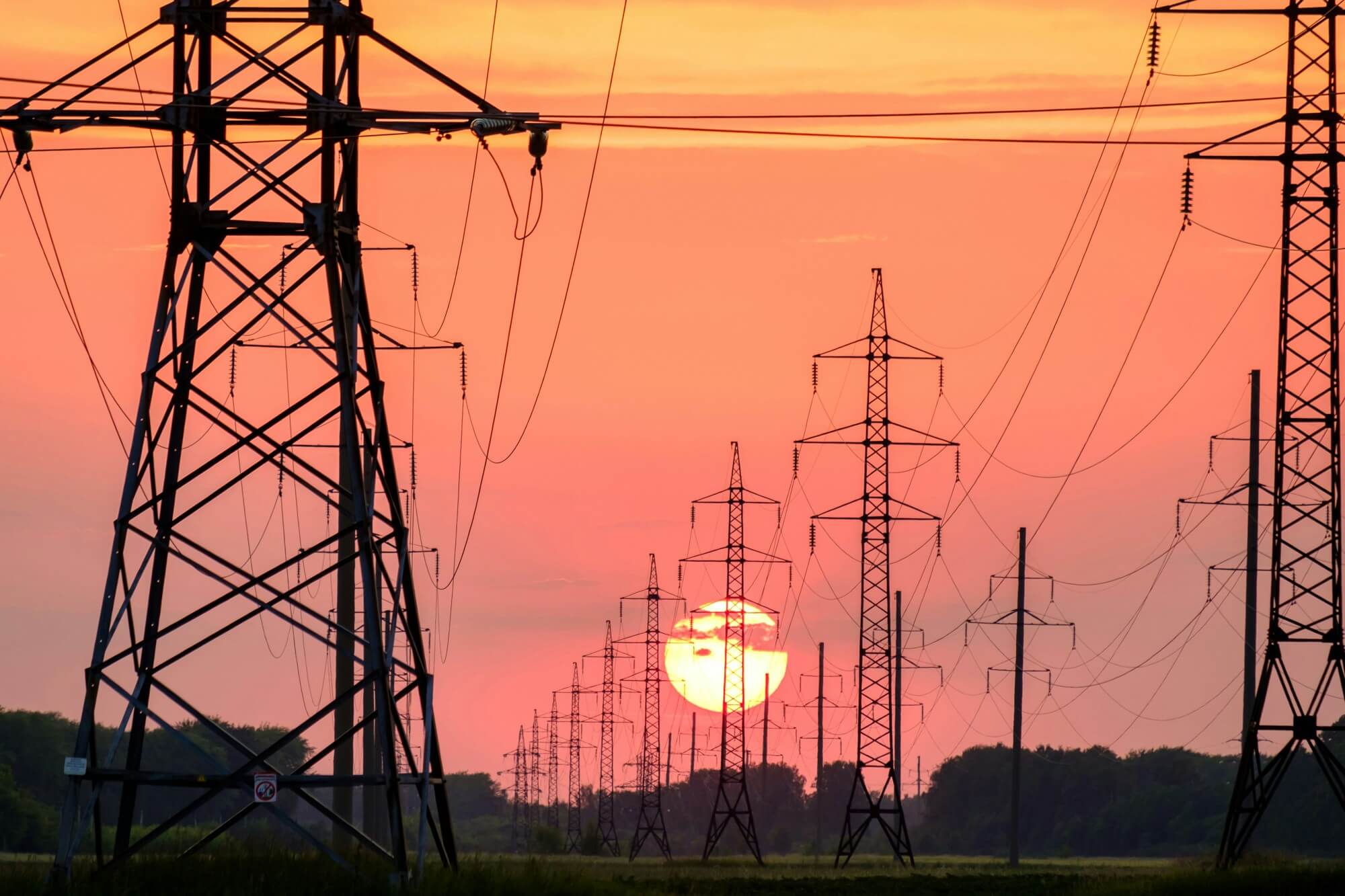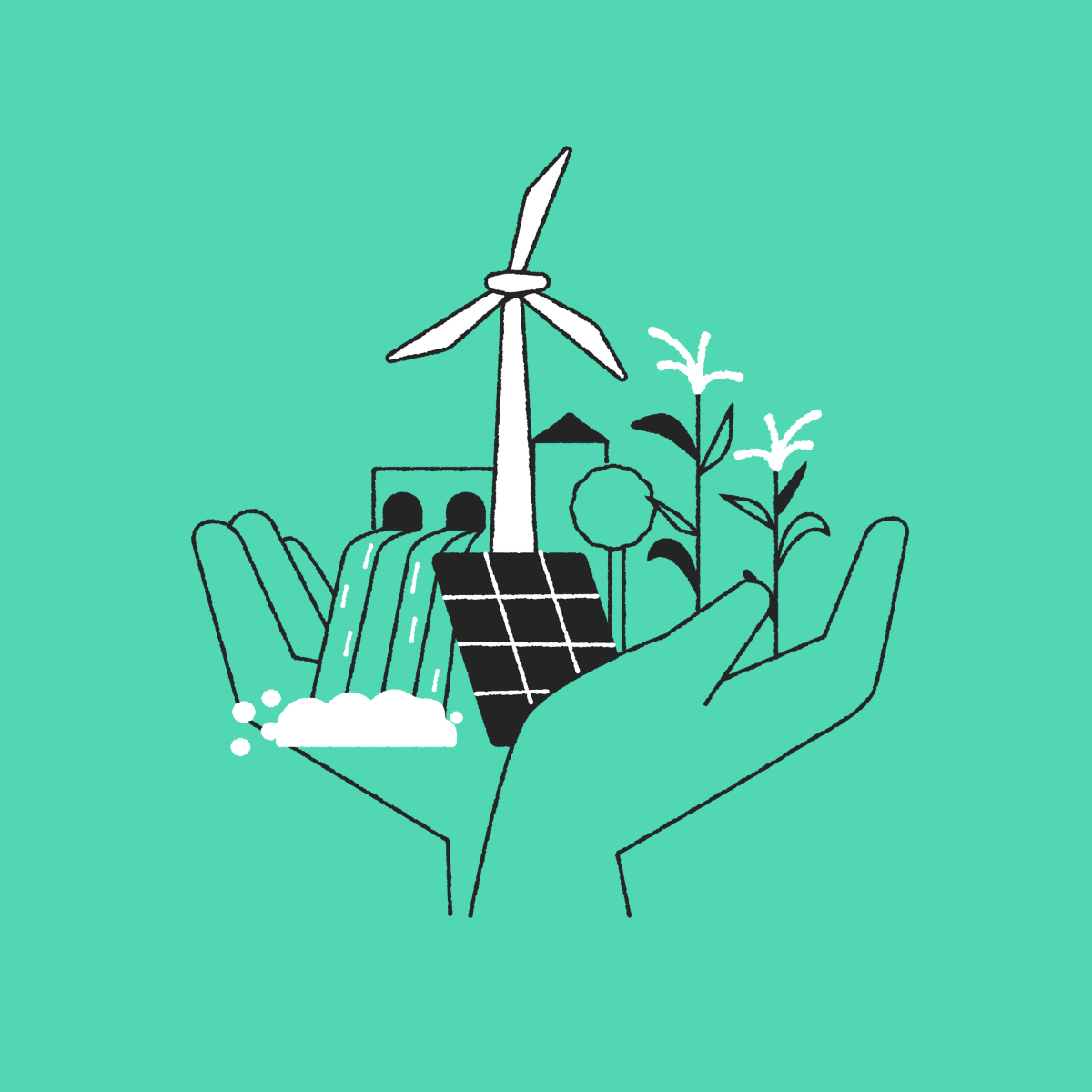Real Assets
We build future energy systems and resilient infrastructure, backing emerging opportunities in technology, land and water.
Real Assets
Private Equity & Ventures
Real Assets
Private Equity & Ventures
Jasmine Savage, Investment Associate, discusses how electric utilities, traditionally defensive holdings, are now outperforming the broader market and offering structural growth exposure due to their central role in Europe's energy transition.

This year has been different. The STOXX 600 Utilities Index has returned 20.9% year-to-date, beating the broader STOXX 600 at 13.3% and the S&P 500 at 14.2%1.
Around half of Europe’s utilities sector consists of electric utilities, now central to the region’s energy transition. Stronger regulatory frameworks and lower financing costs are enabling companies to accelerate investment in grids, grow their asset bases, and earn attractive regulated returns. This blend of steady income and capital growth potential has drawn investors back to the sector. Utilities are no longer just a safe haven; they’re also a meaningful way to gain exposure to structural growth trends like decarbonisation and electrification.2
Strong utility performance reflects their central role in building the infrastructure for a low-carbon economy. They are central to adapting existing power networks to the evolving geography of electrification.
Electricity grids were built for one-way flows of power from large generation plants to consumers. That structure is shifting fast. Smaller, decentralised renewable energy projects are replacing fossil fuels, while data centres and industrial electrification are driving new demand.
This is demonstrated by new grid connections requests, which have surged to accommodate electricity load growth across European transmission networks. In the UK, there has been a 136% increase in the size of the grid connection queue over the past two years.3 In Italy, requests from data centres alone climbed from <2GW at the end of 2021 to 50GW by mid-2025.4 This compares to the country's total generation capacity of 130GW.5
Energy transition depends as much on geography as technology. Greater flows of electricity create congestion and curtailment risks, especially in countries where resource-rich areas are far from major cities. For instance, in the UK, Italy, and Sweden, strong solar and wind resources are often located far from industrial centres. Existing grids lack capacity to efficiently transport electricity to demand centres, creating bottlenecks. This can lead to wasted energy and higher system costs. Investing in high-capacity transmission infrastructure is essential to channel renewable power from resource-abundant regions to where it’s used.

Europe is entering a major investment cycle in transmission and distribution (“T&D”) networks. Governments recognise that rising electricity demand is straining grids, many of which are close to saturation points for renewables. Capacity limits push up system costs which are ultimately borne by consumers. These costs include payments to stop generators, run backup plants and maintain network stability.
In the UK, doubling transmission build-out by 2030 to facilitate decarbonisation is a strategic priority.7 Ofgem estimates that investment to expand grid capacity will lower household bills by £30 by 2031, by addressing the system costs associated with curtailment and long-term reliance on gas plants.8
The November 2023 EU Grids Action Plan has accelerated grid development across member states.9 Utilities are rolling out projects to integrate renewables, connect data centres, and support electrification of heavy industry. Across Europe, grid capex is expected to exceed $70 billion by 2025, twice the level of a decade ago.10 These investments are driving rapid growth in the Regulated Asset Base (RAB) of utilities that own and operate the networks. This includes high-voltage transmission lines, substations, cables, and transformers that form the backbone of the power system and account for much of the capital spend.
Utilities earn government-approved rates of return on these investments, designed to ensure fair pricing for consumers while providing predictable profits for operators and investors. Because regulated returns compound on a growing asset base, grid expansion has the potential to support earnings and shareholder value over time.

Terna (“TRN”), Italy’s national transmission operator, offers a clear case study of how transmission investment underpins both decarbonisation objectives and energy security. Italy has long relied on imported fossil fuels, especially Russian gas, which made up more than 40% of imports before 2022.12 The country now aims for 65% renewable electricity generation by 203013 and carbon neutrality by 2050.14 Rapid solar and wind growth in the south has outpaced transmission capacity, creating bottlenecks.
Terna plans to invest €18 billion between 2024 and 2028 to alleviate pressures on the grid. This represents a 65% increase on the previous regulatory period and will drive a 9% compound annual growth rate in the size of its asset base.15 This supports earnings growth as regulated utilities collect more revenues from customers as new assets are commissioned. Key future projects include the €3.7 billion Tyrrhenian Link (connecting Sicily–Sardinia–mainland), the €1.5 billion Adriatic Link (in central Italy), and the Italy–Tunisia interconnector, which will triple cross-border capacity and position Italy as a Mediterranean power hub.16

These investments aim to connect more renewable generation, ease congestion, and strengthen resilience to external energy shocks. At the same time, regulatory stability provides predictable multi-year return frameworks which give investors visibility over future earnings and dividend growth. Strategic grid investment is being deployed to develop AI infrastructure, decarbonise power generation and support energy security. Utilities like Terna are, in our view, well-set to benefit from this investment and enjoy their time in the sun.
Jasmine Savage
Investment Associate
Foresight Capital Management
For further information, please get in touch with your regular Foresight contact or the client team on the details below:
1 Source: Bloomberg.
2 All total returns data assumes the reinvestment of dividends and measures YTD performance to 30/09/2025.
3 See graph below.
4 Terna 1H25 earnings call and data sourced from: https://download.terna.it/terna/Terna_Piano_Sviluppo_2025_Programmazione_territoriale_efficiente_interventi_connessione_8dd62ec86ec25d1.pdf p. 34.
5 As at 31/12/2023. Source: https://www.terna.it/en/electric-system/statistical-data-forecast/statistical-publications
6 NESO Connections Reform Data Impact Assessment (December 2024) P. 14. The chart shows NESO’s anticipated queue size for transmission connections over 2025 (prior to the implementation of UK grid reforms approved in April 2025). The data does not include direct connection requests such as those from data centres or industrial sites, or requests from small generators.
7 UK Government ‘UK Infrastructure: A 10 Year Strategy’ (June 2025). Accessed at: https://assets.publishing.service.gov.uk/media/6853c606df3015b374b73656/UK_Infrastructure_A_10_Year_Strategy_TEXT_PRINT.pdf p. 76.
8 Ofgem Press Release, ‘Ofgem approves initial £24 billion to operate and maintain critical gas networks and upgrade Britain's electricity supergrid’ (July 2025). Accessed at: https://www.ofgem.gov.uk/press-release/ofgem-approves-initial-ps24-billion-operate-and-maintain-critical-gas-networks-and-upgrade-britains-electricity-supergrid#:~:text=This%20critical%20investment%20covering%20upgrade,electricity%20network%20not%20been%20made.
9 https://ec.europa.eu/commission/presscorner/detail/en/ip_23_6044
10 The European Investment Bank, ‘The missing link in Europe’s energy transition’ (September 2025). Accessed at: https://www.eib.org/en/stories/electricity-grids-investment
11 Source: BloombergNEF. Note: Europe on this chart includes the EU-27, UK, Norway and Switzerland. North Europe is Sweden, Denmark, Norway, Finland, Estonia, Latvia and Lithuania. ETS refers to the Economic Transition Scenario.
12 Friedrich Ebert Stiftung Foundation ‘Energy Without Russia: Country Report Italy’ (August 2023). Accessed at: https://library.fes.de/pdf-files/bueros/budapest/20542.pdf
13 Source: European Commission – ‘National Plan Integrated for Energy and Climate’ (2024).
14 Source: European Parliament – ‘Roadmap to EU Climate Neutrality – Scrutiny of Member States’ (2024).
15 Source: Terna – 2024-2028 Industrial Plan Update Presentation.
16 Source: Terna (company website).
17 Sourced from BB/FCM and based on company guidance.



You have viewed 0 of 0
Foresight Group LLP does not offer legal, tax, financial or investment advice and the information on this website should not be construed as such. We recommend investors seek advice from a regulated financial adviser. The opportunity described in this document may not be suitable for all investors. Any such investment decision should be made only on the basis of the Fund scheme documents and appropriate professional advice.
Foresight Group LLP acts as investment manager and is authorised and regulated by the Financial Conduct Authority with Firm Reference Number 198020 and has its registered office at The Shard, 32 London Bridge Street, London SE1 9SG.
OEICs
An investment in FP Sustainable Future Themes Fund, FP Foresight Global Real Infrastructure Fund, FP Sustainable Real Estate Securities Fund, FP UK Infrastructure Income Fund or FP WHEB Sustainability Impact Fund and Liontrust Diversified Real Assets Fund (together the “Funds”) should be considered a long-term investment that may be higher risk. Portfolio holdings are subject to change without notice.
The Authorised Corporate Directors FundRock Partners Limited (registered office at Hamilton Centre, Rodney Way, Chelmsford, England, CM1 3BY) and Liontrust Investment Partners LLP (registered office 2 Savoy Court, London WC2R 0EZ), are authorised and regulated by the Financial Conduct Authority with Firm Reference Numbers 469278 and 518552 respectively. The Funds are incorporated in England and Wales.
ICAVs
An investment in the WHEB Sustainable Impact Fund and the WHEB Environmental Impact Fund (together the “Funds”) should be considered a longer-term investment that may be higher risk. Portfolio holdings are subject to change without notice.
The Manager of the Funds is FundRock Management Company S.A., authorised and regulated by the Luxembourg regulator to act as UCITS management company and has its registered office at Airport Center Building, 5, Heienhaff, L-1736 Senningerberg, Luxembourg.
We respect your privacy and are committed to protecting your personal data. If you would like to find out more about the measures, we take in processing your personal information, please refer to our privacy policy, which can be found at http://www.foresight.group/privacy-policy.